Our view at Stack - Pipedrive is a robust CRM platform, offering automation, contact data collection, webhooks, AI-powered sales assistant, email communications, email marketing, and customisable sales pipeline workflows.
From prospecting tools to data analysis solutions, there’s no shortage of sales planning software designed to make your company’s sales strategies more effective.
The sheer number of tools available can make it hard to know which one best meets your needs. So, we’ve put together the ultimate guide to sales planning software to help you.
In this article, we’ll explain what sales planning software is and how it can benefit your business. We’ll also outline key tool features to look for and share a list of seven top options worth investing in.
What is sales planning software?
Sales planning software includes tools for planning, implementing and managing your company’s sales processes.
Sales planning software may consist of an all-in-one solution with multiple sales planning features. For example, you’ll find customer relationship management (CRM) platforms with sales forecasting, budgeting, goal setting, resource allocation and performance tracking functions.
Then, there are single-purpose tools that specialize in a specific activity or outcome. For instance, a scheduling tool lets your sales prospects set up meetings directly. A data analysis platform can uncover valuable insights from your sales data.
Finding the right tool, or combination of tools, can help your sales team organize operations and optimize strategies effectively. Let’s look at some benefits of using sales planning software that is relevant to you.
6 benefits of sales planning software
Businesses have moved on from planning their sales strategies, operations and supply chains using spreadsheets. Today’s more dynamic solutions offer a better way to manage your activities and get more out of your data.
Here’s how sales planning software can enhance your team’s sales processes:
1. Align your sales strategies with your business goals
Sales planning software lets you align your day-to-day sales strategies with your company’s long-term objectives. The right tools can consolidate marketing, operations and customer support data to give you a full picture that informs your strategic planning.
You can also ensure your entire sales team works toward the same goals by setting KPIs or targets within your sales planning software. Aligning these metrics with your overall business objectives will help you turn your strategic goals into actionable sales plans.
2. Create effective, data-driven sales strategies
Analytics tools within your sales planning solutions can help you identify sales trends and track your team’s performance. These insights enable you to make more informed strategic decisions. For instance, you might apply specific targeting tactics for different customer segments, optimize your pricing models or allocate resources to team members who need it most.
Say you want to break into new markets. You use a sales planning tool to observe current sales trends and customer preferences. The data helps you craft relevant sales strategies to convert prospects more effectively in those markets.
3. Predict future sales more accurately
Take advantage of your sales planning tool’s advanced data analysis capabilities to collect historical sales data, identify trends and create reliable sales forecasts.
For instance, analyze things like seasonal fluctuations, the success of previous marketing campaigns and changes in customer behavior to make predictions about future sales. More accurate predictions mean better supply planning, budget preparation and targeted sales activities.
4. Get more out of your other sales tools
Many sales planning solutions integrate with other systems – like your CRM or email platform. Combining tools helps break down data silos and improves communication between departments.
For example, incorporating sales and marketing tools into your sales planning software gives you more data on customer behavior and marketing engagement, allowing you to create more detailed customer profiles.
With better buyer profiles, the marketing team can craft more effective campaigns while the sales team can tailor their interactions with prospects.
5. Manage territories and quotas more effectively
Using sales planning tools to analyze geographical sales data and demographics can streamline your sales territory allocation and quota planning. This way, you’ll maximize your market coverage and avoid doubling up on sales efforts.
Balancing workloads through quota and sales territory management will render your reps more efficient and boost team productivity.
6. Get real-time sales opportunity updates
Real-time data can help you make quick sales tactic adjustments in the dynamic sales landscape.
As prospects move through the sales funnel, your sales planning software can track any changes and alert your staff. This capability ensures that your sales team can react swiftly to new sales opportunities.
What to look for in a sales planning solution
There’s no one-size-fits-all solution when it comes to sales planning software. The right features for your sales team to function efficiently depend on your existing tools, budget and business goals.
With that said, here are a few foundational sales planning features you’ll need to get started.
Essential features of sales planning software
|
User-friendly interface |
Your sales planning software should be easy for your sales team to adopt and use effectively without extensive training. |
| Integration with your CRM and other tools |
Integrating sales planning software with your existing tools keeps your customer data synchronized. Making information accessible to everyone ensures all your teams are on the same page. |
| Forecasting capabilities |
Advanced forecasting tools help predict sales trends using historical data. The more accurate the forecasting, the more efficient your financial planning and business performance. |
| Customizable reporting |
Custom reports tracking relevant sales metrics allow you to analyze performance and make informed decisions. |
| Mobile optimization |
A mobile app lets your sales team access data, update customer information and communicate on the go. |
| Pipeline management |
Seek effective pipeline management tools to track your deals from first contact to closure. They’ll help identify bottlenecks and opportunities in your sales process. |
| Collaboration tools |
Some sales planning software lets you communicate, share documents and update team members in real time. Collaboration features enable better coordination and faster decision-making. |
| Scalability | Your sales planning software should scale up as your business grows so you can easily add support for more users, data and additional features. |
Work out which sales planning solution features are indispensable for your business and the nice-to-haves. You’ll be able to identify the right sales planning software – or a combination of suitable sales tools – that fits your budget and gives you what you need.
9 steps to creating the perfect sales strategy (with free template)
In this handbook, we’ll walk you through what your sales strategy needs, plus there’s a free strategy template to get you started!
7 best sales planning tools
To help you get started, we’ve compiled a list of seven top-rated sales planning solutions. We made our selections based on key tool features and honest customer reviews.
1. Pipedrive CRM
Pipedrive is a cloud-based sales CRM that lets you manage leads, communicate with customers and track deals and customer interactions quickly and easily.
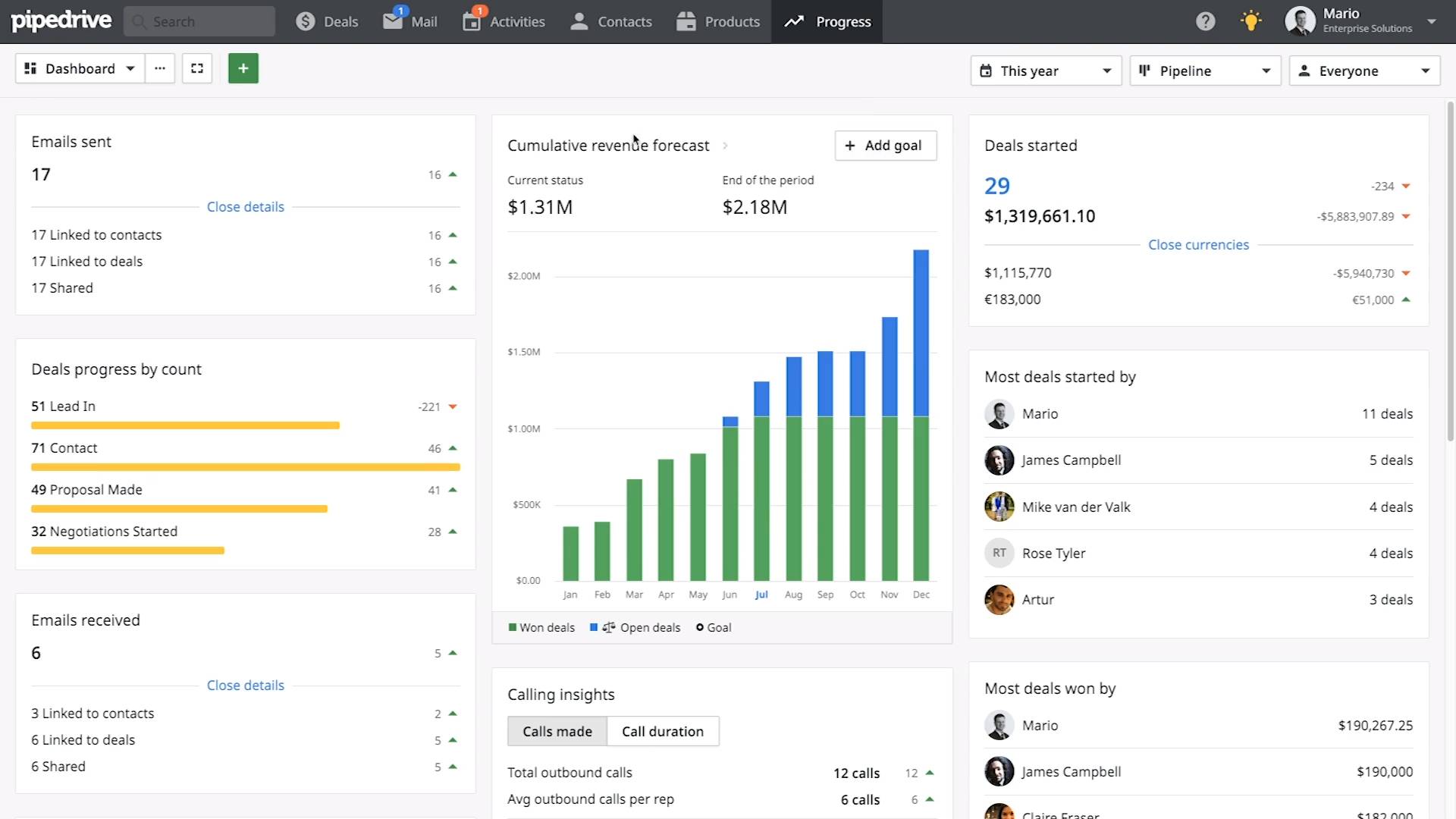
The platform works to enhance sales actions and outcomes. You can customize Pipedrive’s intuitive dashboard to different sales processes, while automated features save you time so you can focus on closing sales.
Pipedrive offers a host of features that enhance sales planning, including:
-
Visual sales pipeline. See your entire sales process at a glance and easily identify sales bottlenecks with intuitive, customizable pipeline management tools. Drag-and-drop deals along funnel stages to organize processes your way.
-
Customizable reporting. Pipedrive’s robust Insights feature helps you analyze sales data and generate reports to understand key metrics like win rates, average deal size and sales cycle length.
-
Sales forecasting. Anticipate future sales and revenue with Pipedrive’s sales forecasting tools, enabling more strategic planning and resource allocation.
-
Activity and goal setting. Schedule sales activities like calls, sales meetings and follow-up emails directly into each deal. Set activities and goals for individual sales reps or the entire team to focus on actionable, measurable targets.
-
Workflow automation. Pipedrive’s Automations feature allows you to streamline routine actions like follow-ups and admin tasks.
-
Pipedrive AI. The AI CRM analyzes sales data and suggests deals with higher win probabilities, guiding reps toward the most promising opportunities and improving resource allocation.
-
Lead management and prospecting. Use Pipedrive to capture, track and nurture leads until they’re ready to enter the sales pipeline. Support your lead generation efforts with the LeadBooster add-on’s conversational Chatbot, prospecting tools and Live Chat.
-
Integrations. Expand your CRM’s functionality with apps from Pipedrive’s marketplace. The platform integrates with over 400 powerful tools so all your favorite sales planning tools can work together.
Pipedrive offers a stack of complementary tools, including a scheduling tool, mobile app and email integration. These make it a great all-in-one solution for enhancing and executing your sales strategies and processes.
Recommended reading

CRM evaluations: How to choose the perfect system
2. Gong
Gong is a revenue intelligence and business planning platform that uses AI to analyze customer interactions across phone, email and web. Sales teams can apply that data to plan and close deals more effectively.
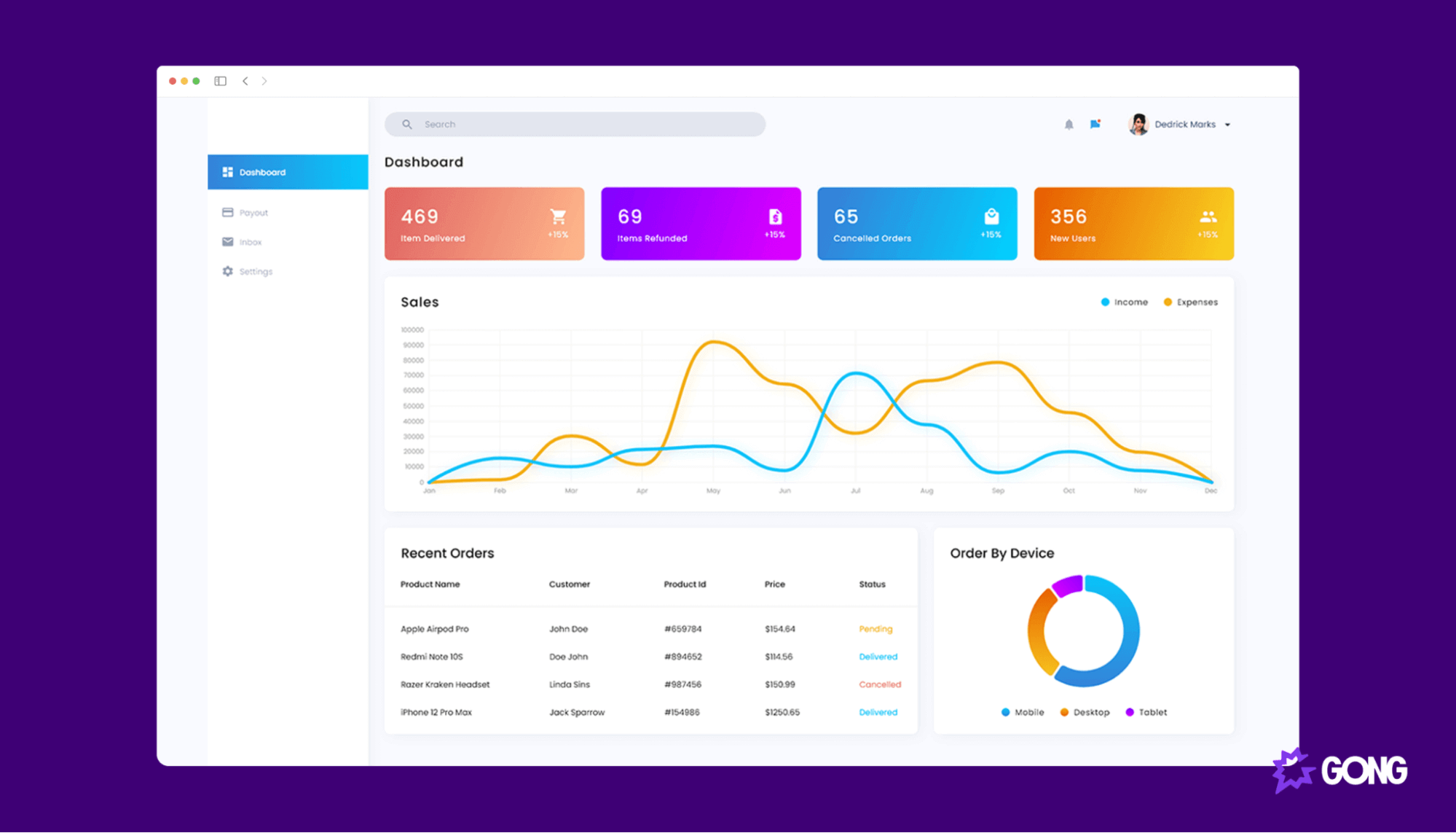
Gong also aligns your sales and marketing efforts by sharing real-time customer feedback for a more customer-centric approach.
The main features of the Gong platform are:
-
Conversation intelligence. Gong records, transcribes and analyzes customer interactions, identifying patterns and creating AI-driven insights to help teams refine their sales pitches, techniques and strategies.
-
Deal intelligence. The tool tracks deals through the pipeline and, based on interaction data, lets you identify risks and opportunities.
-
360-degree visibility. The dashboard gives sales teams full visibility into interactions across all channels for a complete view of the customer journey.
-
Collaborative tools for feedback and coaching. The platform integrates with other tools to provide real-time feedback and coaching. Sales leaders can note key parts of sales calls and give direct feedback to sales reps.
3. DeepLoop
DeepLoop is a sales automation platform that uses AI to enhance sales teams’ effectiveness, letting sales reps focus on essential activities like engaging with prospects.
A standout feature is DeepLoop’s ability to analyze past customer interactions and tweak its models based on real-time results. This adaptive learning helps teams refine their sales strategies and planning and can lead to improved sales outcomes over time.

Here are some of DeepLoop’s other features:
-
Automated data capture. Organize data from sales interactions and reduce the need for manual data entry. This DeepLoop feature ensures your CRM system is always up-to-date and reduces human error.
-
AI-driven lead scoring. DeepLoop uses machine learning algorithms to evaluate and score leads based on the likelihood of conversion, helping sales teams prioritize their efforts.
-
Intelligent workflow automation. Automate routine activities like follow-up emails and scheduling based on predefined rules for smoother sales planning.
-
Real-time insights and analytics. Gain insights into sales performance, customer behaviors, and market trends as they happen in order to make data-driven decisions.
-
Personalized recommendations. Get personalized recommendations on the next best actions for sales reps to take and make your sales process more efficient.
4. Anaplan
Anaplan is a sales planning tool that lets you apply adaptable strategies to optimize your sales team’s performance. The software gives you real-time visibility into your sales operations.
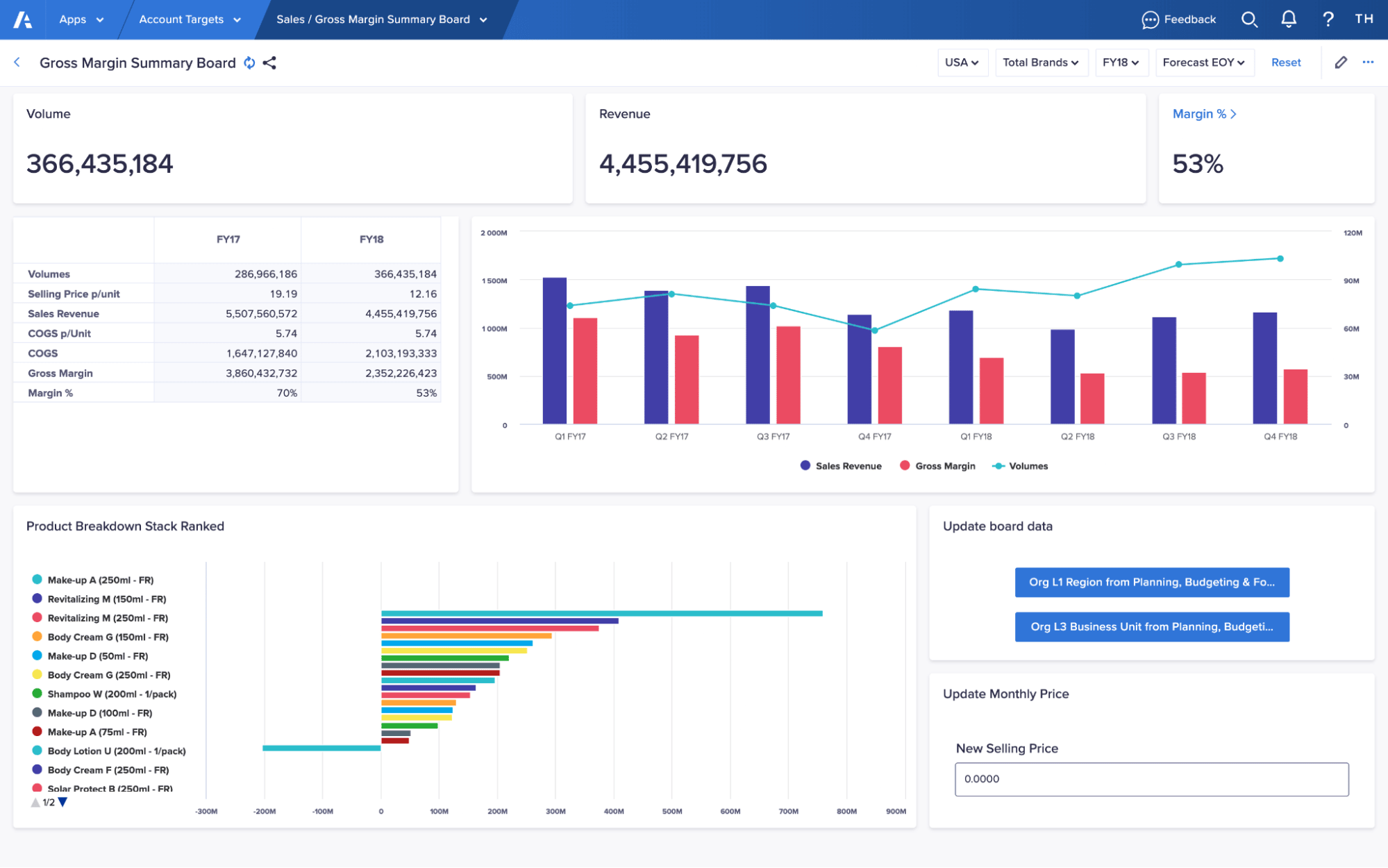
Features like quota planning, territory management and sales compensation planning help you streamline your sales process, get more accurate forecasts and motivate your sales team to reach their targets.
Anaplan’s main features include:
-
Predictive customer segmentation. Anaplan uses your data and market signals to target customers with the highest likelihood of converting. It can match each account with the ideal sales rep for that customer, improving the chances of a sale.
-
Territory planning. The Anaplan solution helps you with sales territory management based on your business needs. You can adjust plans and create territories based on geography, industry, products or customers.
-
Quota planning. Design effective quotas that motivate your sales reps. Model individual sales quotas using a range of data like account size, rep history and pipeline needs.
-
Sales capacity planning. Calculate your sales capacity and create effective ways to optimize win rates, conversion rates and more. The software helps you ensure there are no gaps in your strategy to increase the chances of hitting your sales targets.
5. Xactly
Xactly provides a comprehensive suite of cloud-based sales performance management (SPM) tools. The suite includes Xactly’s sales planning software to enable a more strategic and data-driven sales planning process.
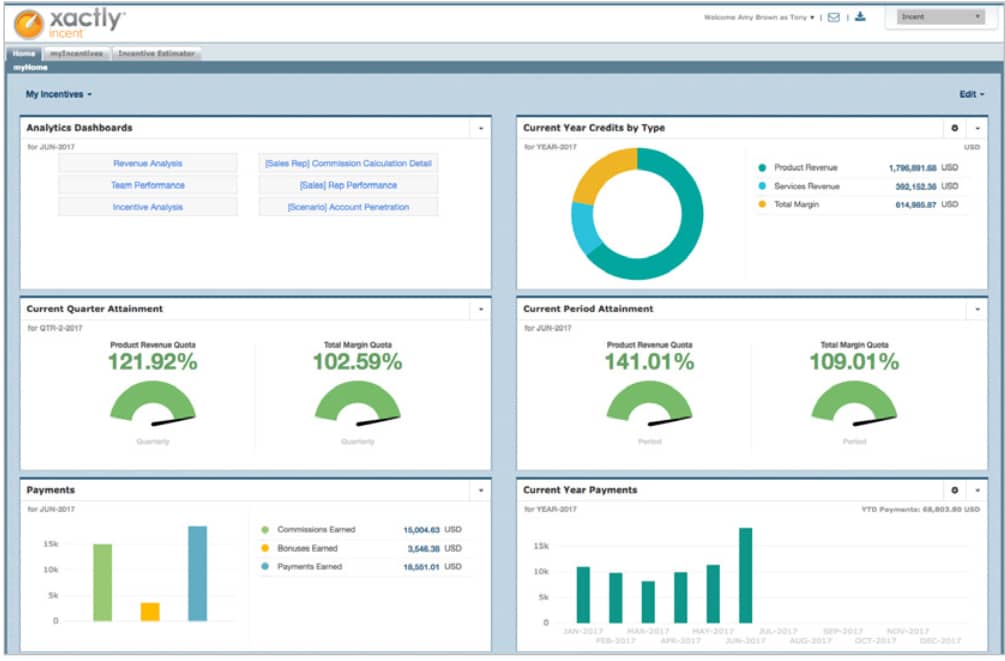
Xactly’s key features include:
-
Incentive compensation management. Manage and optimize your sales incentive plans to align rep activities with sales targets and company goals.
-
Territory and quota planning. Xactly’s AI-led territory management tool helps you plan, design and manage sales territories and quotas across teams and regions. The goal is to maximize revenue potential and boost sales performance.
-
Advanced analytics and forecasting. Get deeper insights into your sales data and performance metrics to forecast sales outcomes and set realistic targets. Break down silos between your marketing, sales and product teams to optimize planning.
-
Performance monitoring. Track your sales reps’ performance and initiatives in real time against pre-set sales goals. A dynamic dashboard provides a clear picture of sales progress and areas that need adjustment.
-
AI-powered recommendations. Xactly uses AI to offer strategic suggestions you can use to base your decisions on predictive analytics.
6. Workday Adaptive Planning
Workday Adaptive Planning is a tool sales teams can use to create more agile, effective plans based on real-time sales data and analytics.
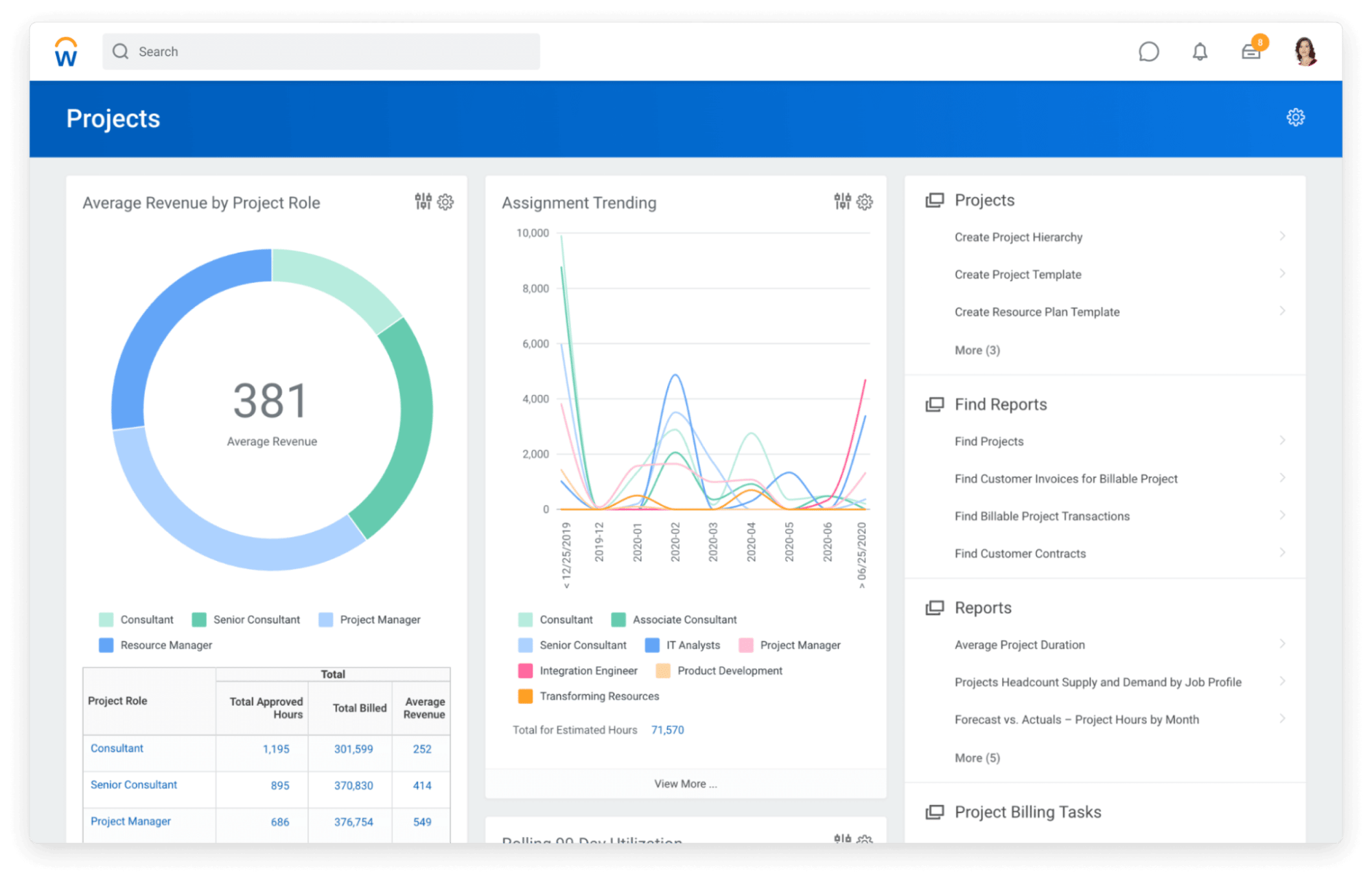
Here’s what else you can do with Workday:
-
Sales quota management. Use quota planning models to set fair quotas across your organization and reward high-performing salespeople.
-
Sales territory management. Use geographic, industry and account data to set up balanced territories that produce better results. You can also score, segment and assign new accounts based on core metrics.
-
Capacity and operations planning. The tool helps you deploy the right sales reps to the right territories. It also makes it easier to close any gaps in coverage, plan for expenses and reach your revenue targets.
-
Analytics and forecasting. Analyze your sales data in various ways to uncover actionable sales forecasts. Get 360-degree visibility into your sales pipeline and see changes in real time so you can make better decisions that maximize sales efficiency.
7. Varicent Sales Planning
Varicent Sales Planning helps you design and implement effective go-to-market strategies. The tool suite lets you optimize market coverage and track performance to adapt to changing conditions in real time.
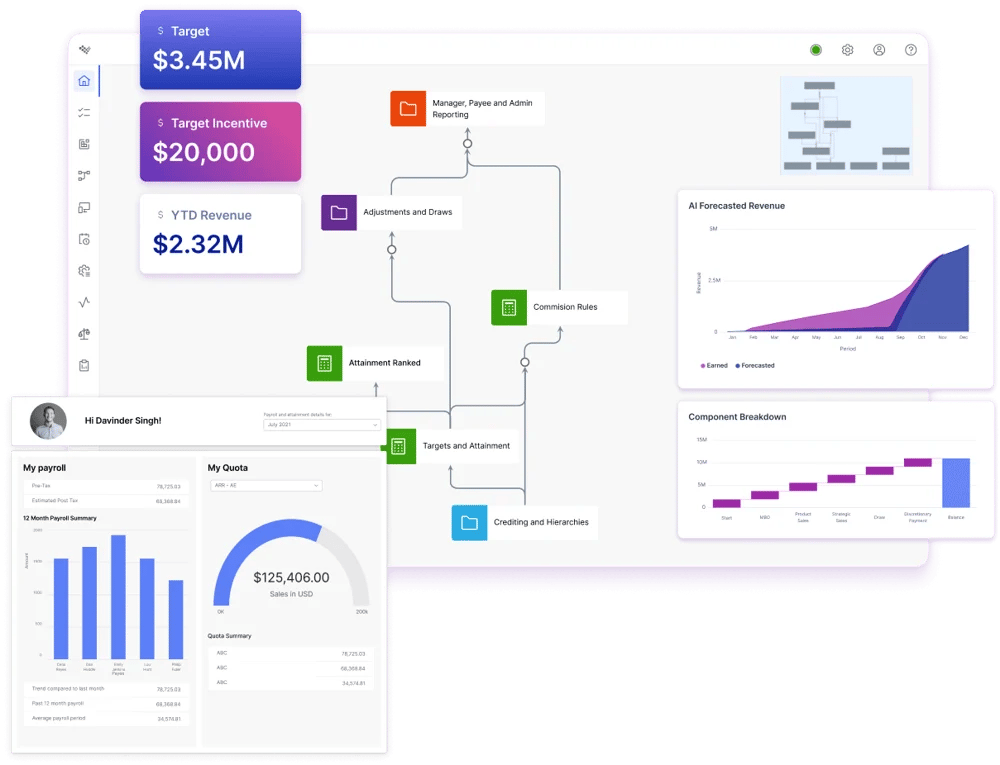
Core features of Varicent Sales Planning include:
-
Unified territory and quota planning. Work with your sales team to create effective sales territories and quota allocations. You’ll align teams with corporate objectives and budgets so they can adapt to changes quickly.
-
Visualized sales territories and plans. Use plan visualization and analytics to develop strong go-to-market plans. The tool suite helps you avoid gaps in your approach and create a strategy that balances company objectives with your sales reps’ abilities.
-
Predictive intelligence and scoring. Use the platform’s advanced analytics to predict market shifts and uncover new opportunities. Focus your teams on the prospects with the highest likelihood to buy so you can minimize customer churn.
-
Powerful security measures. Keep your data safe with industry-leading security frameworks and ongoing tool support.
Varicent Sales Planning also provides hundreds of how-to videos and courses through its helpful and detailed knowledge base.
Final thoughts
Sales planning solutions are powerful tools that business stakeholders can leverage to improve their sales strategy.
When researching your options, identify what can help you manage your customer relations, forecast future sales and analyze sales performance for missed opportunities.
Among the leading sales planning software available on the market, Pipedrive offers a highly comprehensive solution. Thanks to robust sales CRM functionality plus additional features and integrations, Pipedrive can support your team’s processes and sales targets, increase profitability and more.
If Pipedrive is of interest and you'd like more information, please do make contact or take a look in more detail here.
Credit: Original article published here.
